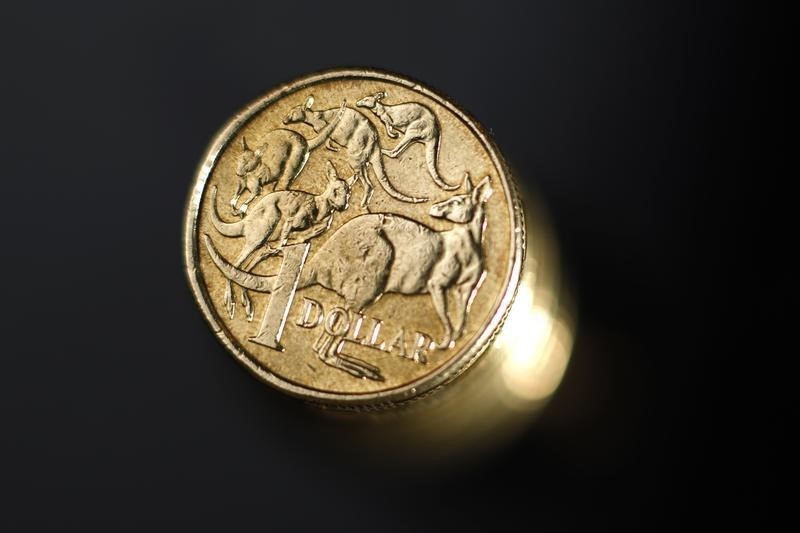By Cecile Lefort and Charlotte Greenfield
SYDNEY/WELLINGTON, Sept 4 (Reuters) - The Australian dollar plumbed a fresh 6-1/2-year low on Friday as renewed worries about global growth encouraged more selling by investors who were already deeply bearish, in turn dragging the New Zealand dollar lower.
The Australian dollar AUD=D4 fell as far as $0.6960, its lowest since 2009, after key support of $0.6980 finally gave way. It was last at $0.6975.
It has slipped 2.8 percent since Monday and if sustained, it would be the second largest weekly loss this year.
The Aussie was hit on all fronts, even losing ground against a depressed euro EURAUD=R . The common currency took a broad hit overnight after the European Central Bank suggested it may have to expand its already massive stimulus program.
The Australian currency also dropped to a two-year trough of C$0.9219 versus its Canadian peer AUDCAD=R , while it was down 4.5 percent against the safe-haven yen for the week AUDJPY= .
Investors have been aggressive sellers of the Aussie in recent weeks, in large part due to heightened concerns about a hard landing for the Chinese economy. China is Australia's top export market.
Focus is on U.S. nonfarm payrolls due later on Friday and a solid payrolls outcome would bolster the case for an interest rate hike by the Federal Reserve this month. Conversely a weak number would cloud the view for a September lift off. ECONUS
"Failing a completely disastrous U.S. employment print, we could easily test $0.6900 as regional woes (China) compound," said Stephen Innes, a senior trader at FX/CFD firm OANDA Australia and Asia Pacific.
The New Zealand dollar NZD=D4 fell in sympathy with the Aussie to $0.6365.
Investors were beginning to look ahead to the Reserve Bank of New Zealand's policy review meeting next week. The market has fully priced in a cut to the official cash rate by 25 basis points.
"If they provide an outlook that suggests that they are not completely convinced that a rate cut is necessary in coming meetings, then that could give the NZD a bit of support," said Chris Tennent-Brown, an economist at ASB. "But likewise if they come out very downbeat, the path of least resistance for the New Zealand dollar is probably down."
Analysts predicted the kiwi would fall into the early $0.6000 range by the end of the year.
New Zealand government bonds 0#NZTSY= were unchanged with yields mostly flat along the curve.
Australian government bond futures rose, with the three-year bond contract YTTc1 up 2 ticks at 98.240. The 10-year contract YTCc1 added 3.5 ticks to 97.3200.
